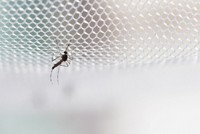Advertisement
Grab your lab coat. Let's get started
Welcome!
Welcome!
Create an account below to get 6 C&EN articles per month, receive newsletters and more - all free.
It seems this is your first time logging in online. Please enter the following information to continue.
As an ACS member you automatically get access to this site. All we need is few more details to create your reading experience.
Not you? Sign in with a different account.
Not you? Sign in with a different account.
ERROR 1
ERROR 1
ERROR 2
ERROR 2
ERROR 2
ERROR 2
ERROR 2
Password and Confirm password must match.
If you have an ACS member number, please enter it here so we can link this account to your membership. (optional)
ERROR 2
ACS values your privacy. By submitting your information, you are gaining access to C&EN and subscribing to our weekly newsletter. We use the information you provide to make your reading experience better, and we will never sell your data to third party members.
Synthesis
Newscripts
Kitty science: creative uses for catnip; feline physics
by Sarah Everts
July 18, 2016
| A version of this story appeared in
Volume 94, Issue 29
Feline highs and insect lows

It used to be that when you wanted to spoil the special kitty in your life, your options were limited to twee toys stuffed with catnip capable of transforming your charmingly contemptuous pet into a frenzied, and drooling, fur ball of euphoria. If it was a truly special evening, you could bathe with Humphrey’s Handmade Crazy Cat Lady soap, crafted with catnip for kitty and lavender for you. The Newscripts gang is a tad unclear about whether one is supposed to lure the cat into a bath with the soap—good luck with that.
Now, thanks to the folks at Apollo Peak, you can also kick back with your feline bestie and enjoy a glass of vino. Their “fine feline snack wine” called Pinot Meow is made with catnip, beet juice, and sea salt (but no alcohol). “Why drink alone?” the company asks.
Why, indeed. Especially when your certainly snobby cat—aren’t they all?—can rest assured that the wine is made from “fresh organic catnip grown in the Pacific Northwest of the United States.”
Thanks to science, we know that most kitties really only care about the nepetalactone found in the catnip plant—we say most because about a quarter of cats are immune to catnip’s effects. And it’s not just house cats that love the stuff. In a 1942 paper about catnip, intrepid University of Wisconsin chemists went to a zoo in Madison to try out their nepetalactone extract on a handful of lions, which were “aroused immediately from a state of lethargy to one of intense excitement” (J. Am. Chem. Soc., DOI: 10.1021/ja01260a025). Please do not try this at your local zoo, folks.
Of course, catnip plants couldn’t care less about giving cats a chemical high. They make nepetalactone as a defense against insect pests, particularly nefarious sap-sucking aphids. Nepetalactone is actually an aphid sex pheromone. It may seem counterproductive that a plant would make its insect nemeses’ sex pheromone as protection, but in this case, it’s ingenious. Aphids don’t typically reproduce sexually in summer, so the pheromones probably won’t attract more pests to the plant. But the pheromones do attract aphid predators, such as the lacewing fly and a creepy wasp that lays its eggs inside live aphids, to the plant. In short, the plant produces aphid pheromones to attract aphid enemies. It’s an awesome application of the “enemy of my enemy is my friend” strategy.
As it turns out, DuPont is partnering with San Francisco-based Entomol to produce a catnip plant extract that they claim repels a wide variety of biting insects with effectiveness similar to the common repellent DEET. One hopes the product doesn’t inadvertently attract elated flea-ridden stray cats to ecstatically nuzzle your body.
Cats might know more about gravity than you

In the world of feline physics, Japanese researchers report that cats understand the concept of gravity. “Our study is the first demonstration that cats seem to grasp the laws of physics,” Kyoto University’s Saho Takagi, an author of the paper, told the Washington Post.
The experiment monitored the attention of cats witnessing seemingly abnormal situations involving gravity, such as a ball rattling in a container that does not fall out when the container is overturned because of magnetism (Anim. Cognit. 2016, DOI: 10.1007/s10071-016-1001-6). The team believes that the long gazes by cats at unusual gravity situations mean that these felines understand gravity basics.
One wonders if the Czech authors of the paper “Free Fall of a Cat—Freshman Physics Exercise” got the memo about a kitty’s gravity know-how. Their paper shows how to calculate the terminal velocity of a falling cat. It introduces a “coefficient of the cat’s fear,” and it suggests that dispatching a cat model off a tall building will engage undergraduate physics students (Eur. J. Phys. 2016, DOI: 10.1088/0143-0807/37/4/045002). Newscripts is pretty certain that cats have a more intuitive understanding of gravity than most freshmen, and we’re equally sure our feline friends are highly purrturbed by this class exercise.
Sarah Everts wrote this week’s column. Please send comments and suggestions to newscripts@acs.org.






Join the conversation
Contact the reporter
Submit a Letter to the Editor for publication
Engage with us on Twitter